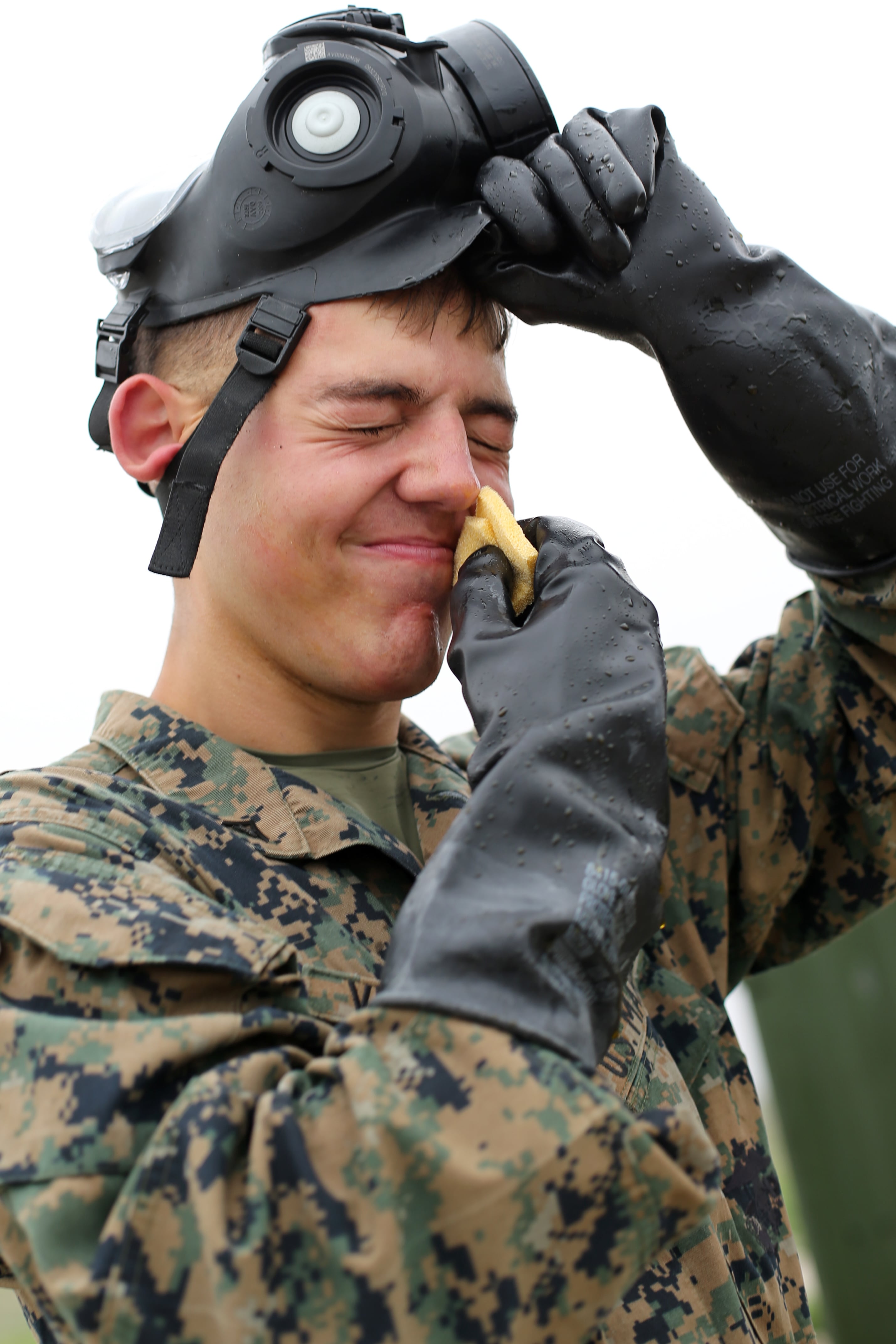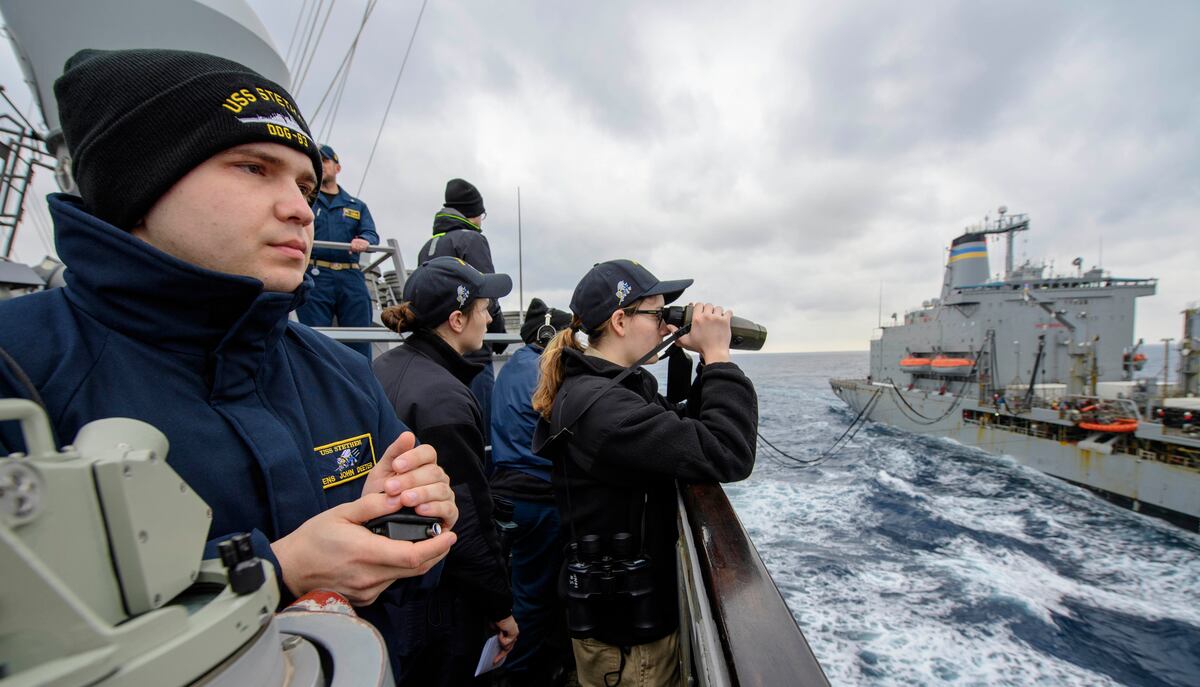WASHINGTON — In March, nearly ten thousand Marines and sailors waged a campaign in the vast Pacific Ocean against a near-peer competitor, putting to test emerging technologies and fighting concepts aimed at sea control.
The Pacific Blitz exercise tackled naval integration and getting “back to our roots” following years of counterinsurgency operations in the Middle East, Lt. Gen. Joseph L. Osterman, the commander of the California-based I Marine Expeditionary Force, told Marine Corps Times in an interview.
Studying a future sea battle, Marines realize that they might be ordered to seize islands and beachheads, a traditional mission for the amphibious force. But a maintenance backlog and procurement delays for amphibious ships and connectors threaten to hamper the Corps’ ability to fight at sea and prepare itself to confront a rising China.
“I believe the Navy has a backlog and a number of platforms for maintenance. So, yes, we are concerned about the availability of these platforms,” Gen. Robert B. Neller, the commandant of the Marine Corps, told lawmakers on April 10.
Compounding the problem, the Navy’s recent budget request delayed procurement of another large deck amphibious ship and an amphibious transport dock ship, or LPD, as the sea service instead buys emerging technologies for the future fight.
The Pentagon wants to buy an LPD in 2021 and another in 2023, plus a big deck amphib in 2024, but the Corps’ goal of reaching 38 amphib ships — a requirement Neller views as important for Marines to carry out their mission— may be on hold.
The lack of available amphibs impairs the Corps’ ability to train a force to relearn and experience naval operations and reignites an age-old complaint about adequate Navy support to the Marines’ amphibious mission. There’s also the ongoing debate between military officials and defense experts about how high casualties might rise from a seaborne invasion of a contested beachhead.
A 2017 Government Accountability Office report noted that the Navy was unable to support nearly 93 percent of the Camp Pendleton-based I MEF’s requests for amphibious training. Nearly half went unfulfilled for the East Coast II MEF.
“Even with these adjustments, we are going to have 36 amphibious ships at the end of the five-year program in FY 24, against the requirement for 38. So we’re taking this very seriously,” Chief of Naval Operations Adm. John M. Richardson told lawmakers in April.
“We still have a requirement for 38 amphib ships, we believe 12 big decks and 26 LPD similar whole forms. And so we would like to get to 38 ships,” Neller added.

After 17 years of fighting in the Middle East and Afghanistan, critics worry that the Corps lost touch with its sea roots and is in the process of relearning its primary amphibious mission, a key reason why the Marines need more ships to retool those skills.
Retired Marine Lt. Col. Dakota Wood, a senior research fellow for the Heritage Foundation, routinely makes the case for more amphib ships and training to prepare the Corps for the near-peer fight.
“Complicating matters further, the Navy shrank in size, to include the number of amphibious ships it operated, leaving few opportunities for Marine Corps units to gain shipboard experience,” Wood wrote in a research paper titled: “Rebuilding America’s Military: The Unites States Marine Corps.
“In short, for nearly 20 years, the Corps had less opportunity to gain experience in naval matters and invested little intellectual effort in exploring its role in future naval campaigns,” he said.
The lack of available ships also complicates the Corps' efforts to do larger sea training beyond the 2,000 Marines that comprise a Marine Expeditionary Unit.
The recent Pacific Blitz exercise, which honed skills for sea control against a near-peer foe, involved four Navy ships and roughly 5,000 Marines. Lt. Gen. Osterman says he’d like to get in the habit of doing these MEF-level exercises at least once every year.
“It’s a shift from what we’ve been used to doing in terms of counterterrorism,” Osterman said.
The exercise afforded the Corps the chance to see how vulnerable the service is against a near-peer foe and how the force “can contribute to the sea control fight,” Osterman said.
RELATED

To Marines, exercises like Pacific Blitz don’t merely help update potential war plans but are essential to teaching personnel how to fight and survive in 21st combat.
That likely could mean commanders relearning the importance of the Corps’ basic block of combat power, the infantry squad, and devolving its management down to lower levels of leadership.
There could be “a platoon-sized element on an island somewhere and they got to have this savvy ability to be able to make some decisions on their own,” Osterman said.
To Neller and Osterman, it’s not a question of choosing between a Navy investment in future technologies and the Corps’ need for more amphibs because both are necessary to winning the next major campaign at sea.
“We are looking at things, like, how do we fold in the littoral combat ship? How do we, with the advancement in connectors … how does that work for us in terms of intra-island maneuver?” Osterman said.
The top Marine Neller also knows that without high-tech vessels like the Navy’s fleet of stealthy and lethal submarines, they won’t even be able to wage war on the ground.
“Obviously, we believe that amphibs obviously are critically important to Marines, but submarines are important to Marines too because if we don’t have submarines we're not going to get to the fight,” Neller told lawmakers in April. n
Ground combat reporter Todd South contributed to this report.
Shawn Snow is the senior reporter for Marine Corps Times and a Marine Corps veteran.









